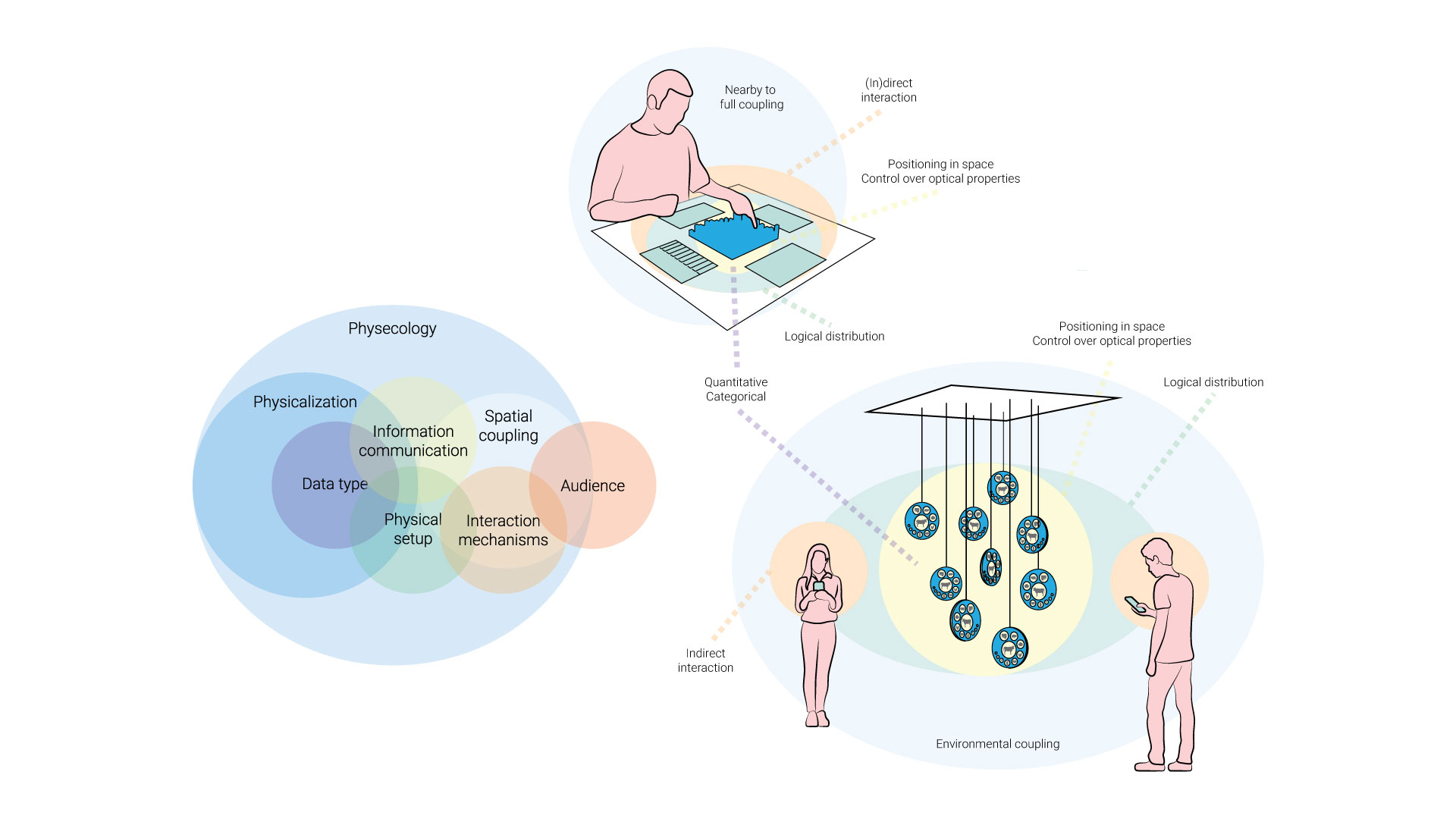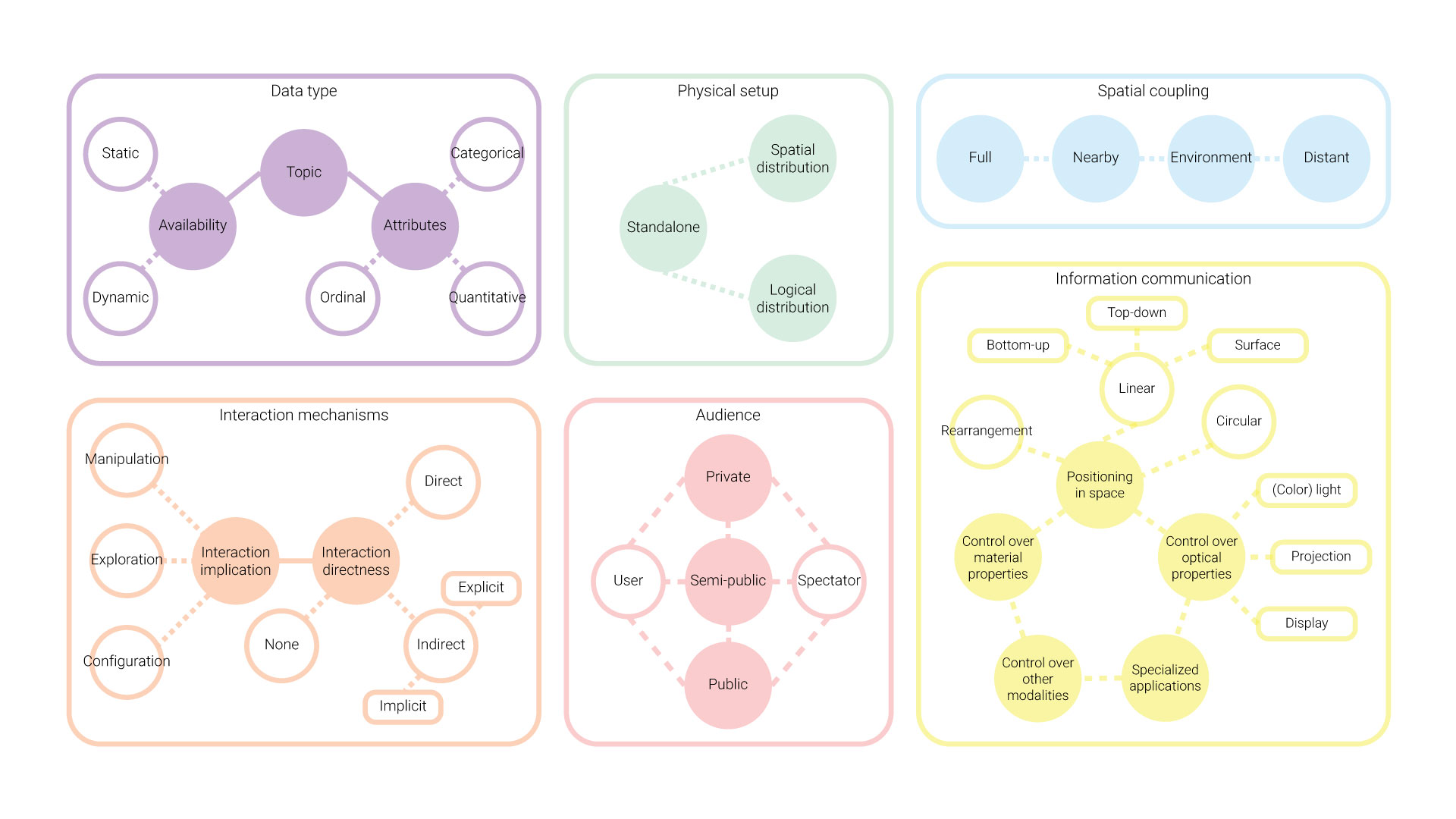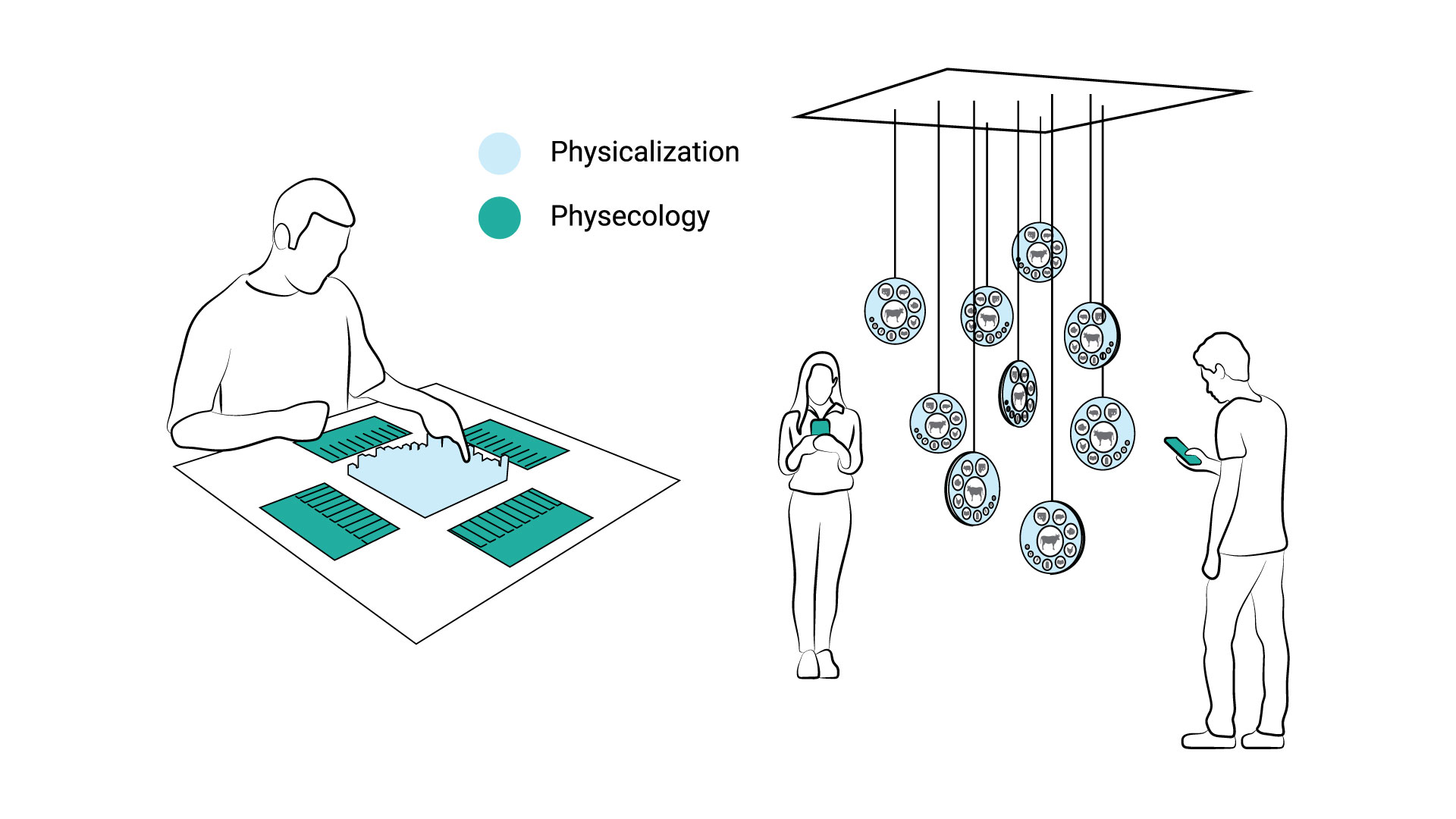Abstract
The standard definition for ‘physicalizations’ is “a physical artifact whose geometry or material properties encode data” [47]. While this working definition provides the fundamental groundwork for conceptualizing physicalization, in practice many physicalization systems go beyond the scope of this definition as they consist of distributed physical and digital elements that involve complex interaction mechanisms. In this paper, we examine how ‘physicalization’ is part of a broader ecology — the ‘physecology’ — with properties that go beyond the scope of the working definition. Through analyzing 60 representative physicalization papers, we derived six design dimensions of a physecology: (i) represented data type, (ii) way of information communication, (iii) interaction mechanisms, (iv) spatial input-output coupling, (v) physical setup, and (vi) audiences involved. Our contribution is the extension of the definition of physicalization to the broader concept of ‘physecology’, to provide conceptual clarity on the design of physicalizations for future work.
 A diagram showing (i) the relation between a physicalization and the physecology it belongs to and (ii) how the different design dimensions manifest in exemplar systems such as EMERGE and Econundrum.
A diagram showing (i) the relation between a physicalization and the physecology it belongs to and (ii) how the different design dimensions manifest in exemplar systems such as EMERGE and Econundrum. An overview of six key dimensions of a physecology with a detailing of the relationships within each dimension.
An overview of six key dimensions of a physecology with a detailing of the relationships within each dimension. Sketches of the physicalizations EMERGE and Econundrum illustrating the concepts of ‘physicalization’ and ‘physecology’.
Sketches of the physicalizations EMERGE and Econundrum illustrating the concepts of ‘physicalization’ and ‘physecology’. An overview of the 60 data physicalizations included in the sample list used for the analysis.
An overview of the 60 data physicalizations included in the sample list used for the analysis. An overview of nine exemplar physecologies, illustrating how they position themselves within the framework and in relation to each other.
An overview of nine exemplar physecologies, illustrating how they position themselves within the framework and in relation to each other.